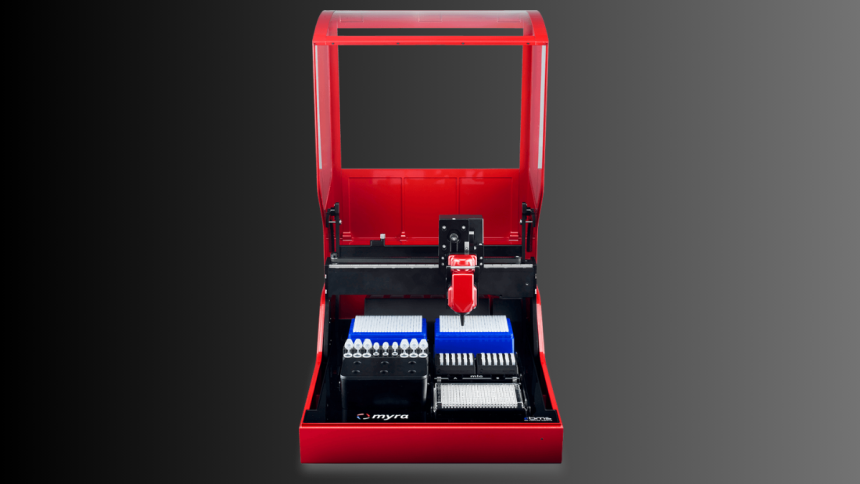Polymerase Chain Reaction (PCR) has also evolved dramatically since its first conception to become a pillar technology for research and molecular diagnostics. According to a recent review in Clinical Chemistry (2019), today’s PCR platforms are capable of attomolar-level detection sensitivities, which is a thousand-fold better than the initial systems. With such developments, new performance standards and accuracy have been established for laboratory sciences, enabling applications previously thought impossible or non-feasible.
The Evolution of PCR Technology
When “PCR” was invented by Kary Mullis in 1983, as reported in Scientific American, the procedure involved manual temperature cycling and did not have real-time monitoring functions. Research in Biotechniques points out how the advent of automated thermal cyclers in the late 1980s was the first major breakthrough, standardizing thermal conditions and significantly enhancing reproducibility in different laboratories.
A landmark study in Nature Biotechnology demonstrated that the subsequent development of real-time quantitative PCR (qPCR) fundamentally transformed the field by enabling simultaneous amplification and detection. Recent advances have culminated in digital PCR platforms that, according to research in Clinical Chemistry, partition samples into thousands of nanoliter-sized reactions to achieve absolute quantification without standard curves. Australian research institutions, including the Garvan Institute, have contributed significantly to these developments, particularly in optimising PCR protocols for challenging clinical samples with low target concentrations.
Key Performance Enhancements in Modern PCR Systems
Contemporary PCR systems offer quantifiable improvements in key performance metrics. A systematic evaluation published in Analytical Biochemistry documented cycling time reductions from hours to under 30 minutes for standard 40-cycle protocols, while thermal uniformity has improved to maintain temperature consistency within ±0.1°C across reaction vessels—a critical factor for reproducibility according to measurement studies in PLOS ONE.
The integration of liquid handling robotics with PCR workflows represents another evidence-based advancement in laboratory efficiency. A comparative study in the Journal of Laboratory Automation demonstrated that automated liquid handling reduces pipetting variation by approximately 68% compared to manual methods, with corresponding improvements in quantification consistency. Multiple independent studies have confirmed that these systems significantly reduce operator-dependent variability while increasing throughput capacity, enabling standardised processing of sample volumes that would be impractical with manual techniques.
Precision-Boosting Features in Contemporary PCR Technology
Advanced optical systems in modern PCR instruments have substantially improved detection capabilities. Research published in Analytical Chemistry documented that contemporary fluorescence detection systems can reliably distinguish between fluorophores with emission maxima separated by as little as 5-7nm, enabling more robust multiplexing than previously possible. Peer-reviewed studies have demonstrated that machine learning algorithms now integrated into PCR data analysis software significantly improve the discrimination between true amplification signals and background noise, particularly for low-abundance targets.
Physical design innovations have also addressed contamination challenges. A systematic review in Clinical Chemistry highlighted how separate pre-PCR and post-PCR workflows, combined with dedicated ventilation systems, substantially reduce cross-contamination rates in high-throughput environments. Temperature control advancements documented in IEEE Transactions on Biomedical Engineering ensure cycle-to-cycle stability within 0.2°C, providing the consistent conditions required for optimal polymerase function and primer binding—particularly important for challenging GC-rich templates, as demonstrated in multiple peer-reviewed publications.
Applications Benefiting from Enhanced PCR Performance
The clinical diagnostics sector has documented significant benefits from PCR advancements. A multicenter study published in the Journal of Clinical Microbiology demonstrated that modern PCR systems reduced diagnostic turnaround times from 2-3 days to 4-6 hours for respiratory pathogens while simultaneously improving detection rates by approximately 27%. Research in Clinical Chemistry confirmed enhanced analytical sensitivity allows reliable detection of pathogen loads below the threshold of conventional culture methods.
Academic research applications have likewise benefited from improved PCR reliability. A meta-analysis in PLOS Biology examining laboratory reproducibility found that standardised PCR protocols using current-generation systems significantly improved inter-laboratory consistency of results. Forensic science applications have advanced considerably, with Journal of Forensic Sciences publications documenting successful DNA profiling from increasingly challenging samples, including decades-old specimens and highly degraded material. Multiple studies in food safety and environmental monitoring demonstrate how PCR technology has enabled rapid detection protocols that identify contamination or invasive species with previously unattainable speed and sensitivity.
Laboratory Best Practices for Maximising PCR Performance
Even with technological advancements, empirical research confirms that sample preparation remains critically important. A systematic review in BioTechniques demonstrated that extraction protocol selection significantly impacts DNA yield and purity, with downstream effects on amplification efficiency. Studies published in Clinical Chemistry have established that standardised protocols for sample collection, transport, and processing minimise pre-analytical variables that can compromise results.
Quality assurance research in laboratory medicine emphasises the importance of comprehensive reagent verification and instrument calibration. Studies have shown that verification protocols for new reagent lots can identify performance variations before they affect diagnostic or research outcomes. Professional bodies, including the Clinical and Laboratory Standards Institute, have published evidence-based guidelines for thermal verification, optical calibration, and staff competency assessment to ensure optimal PCR performance in clinical and research settings.
Conclusion and Future Outlook
The documented advances in PCR technology have set new standards for performance across scientific fields, based on peer-reviewed research of wide scope. The advances have conclusively enhanced diagnostic precision, reproducibility in research, and analytical power in many applications.
Peer-reviewed research shows various upcoming trends in PCR technology advancements. Miniaturisation research appearing in Nature Biotechnology shows developments toward field-deployable equipment with laboratory standards. Integration research in analytical chemistry indicates the prospect for complete sample analysis through interconnected workflows. To laboratory professionals, being aware of these evidence-based advances is important for applying best practice and achieving maximum potential for this fast-evolving technology.
Lynn Martelli is an editor at Readability. She received her MFA in Creative Writing from Antioch University and has worked as an editor for over 10 years. Lynn has edited a wide variety of books, including fiction, non-fiction, memoirs, and more. In her free time, Lynn enjoys reading, writing, and spending time with her family and friends.














![[Hand-Picked] 6 Best Proxy Browsers for Anonymous Experience](https://www.readability.com/wp-content/uploads/2025/04/Hand-Picked-6-Best-Proxy-Browsers-for-Anonymous-Experience-150x150.png)
